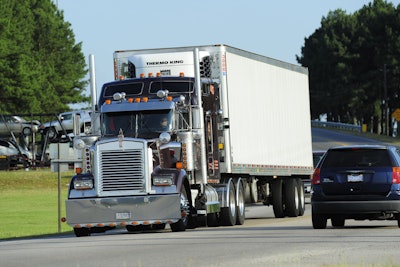Among the reasons for trucking as an owner-operator instead of a company driver, earning potential ranks at or near the top. A blog post from Aaron Terrazas, director of economic research at digital freight broker Convoy, explores that spread between the two career driving paths.
His report, based on 10 years of data from two U.S. Census Bureau targeted surveys, found owner-ops earned 16% more on a per-hour basis than company drivers (almost $6,000 per year). Or, adjusted for demographic differences, the difference dropped to 5% (almost $1,900), largely due to age and experience.
 As strong as the earnings advantage is for smart owner-operators, the worst-performing ones earn well below typical company drivers.
As strong as the earnings advantage is for smart owner-operators, the worst-performing ones earn well below typical company drivers.That contractor-employee spread is in line with what the National Transportation Institute has seen in its fleet surveys. NTI founder Gordon Klemp estimates 8% to 12% higher net income for running as an owner-op (unadjusted for demographics). Lacking a decent incentive such as that, “it would be non-sensical to be an owner-operator,” he notes, given the added risk and extra work.
ATBS, a firm whose financial services for thousands of owner-op clients include tax preparation, found their 2018 income average was $65,360. Since that amount’s close to NTI’s high end for company driver pay in 2018 — $59,000 to $67,000, varying by application, driver record and other factors – these figures affirm a healthy owner-op premium.

Which is not to say the owner-op path is risk-free. Tarrazas reports the top 10% of owner operators earn “about $19,200 more over the course of a year after controlling for demographic factors.” For the low-end 10%, it’s about $11,000 below company drivers.
Terrazas acknowledges that Census data on truckers’ hours and pay, being self-reported, is far from precise. “There’s a lot of subjectivity,” he says, for example, on reporting actual work hours.
One major problem is the Census category “Driver/Sales Workers and Truck Drivers” being so broad — “a big sludge of people,” as Klemp describes it. Also, he notes many of its statistics are reported as hourly earnings, which doesn’t jibe well with per-mile or percentage pay.
Because it’s so broad, Terrazas says, that grouping shows median earnings of only $37,000 for the employed, $40,900 for the self-employed – clearly too low for both company drivers and owner-ops in Class 8 over-the-road trucking. Those figures are based on 2015-2017 Census data inflation-adjusted for 2017 dollars and assuming a 50-week work year.
Terrazas and Klemp agree that Census data offers some consistency in comparing trucking with industries that draw from a similar labor pool. Terrazas found the owner-op model tends to be more lucrative in trucking: “In construction and mining, for example, both earnings and hours are lower among the self-employed.”
Regardless of averages, owner-op achievement varies widely by the individual. There are countless decisions, responsibilities and opportunities, as with any self-employed vocation. Handle them well, and you could find yourself in that top 10% of earners.












